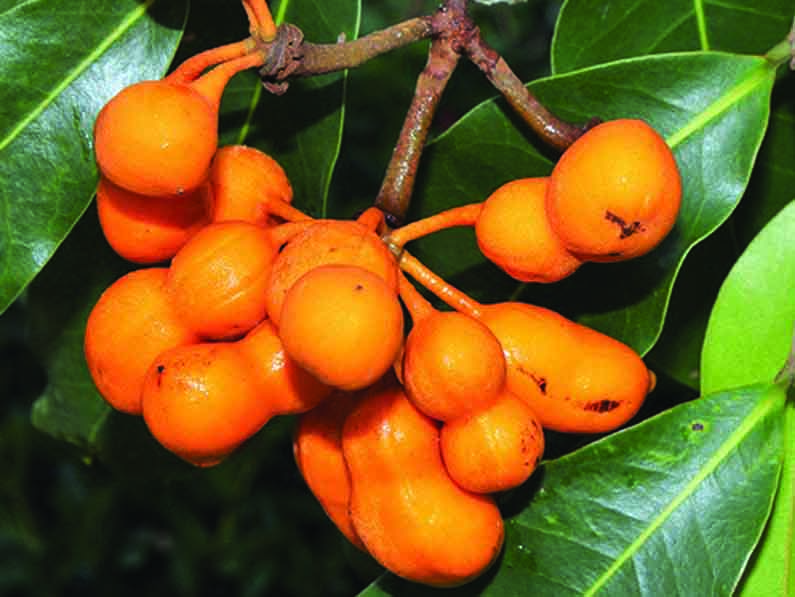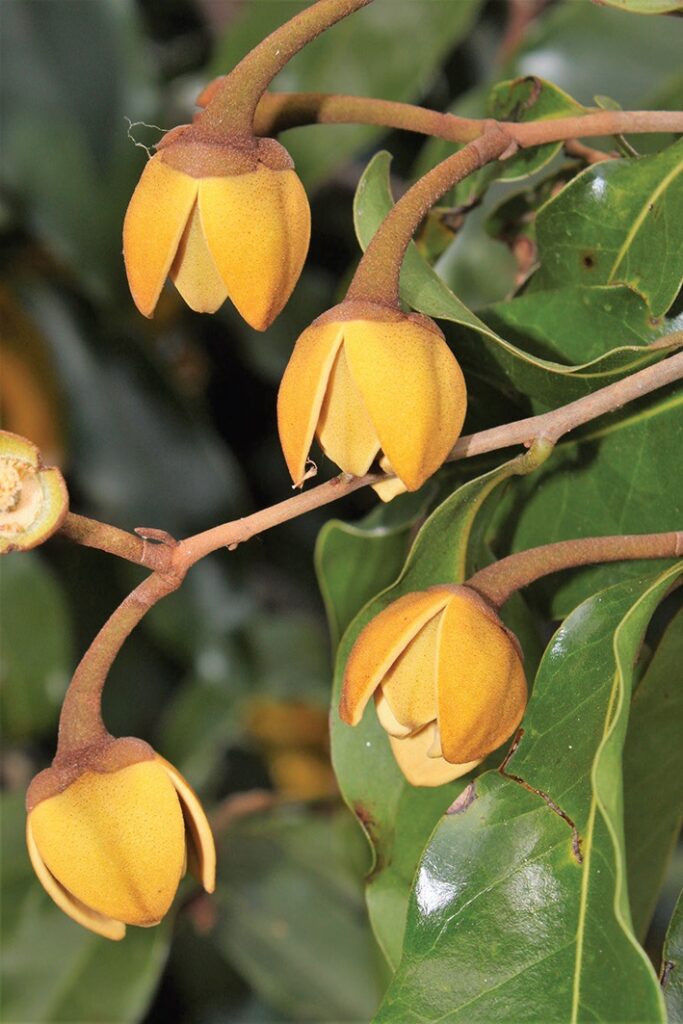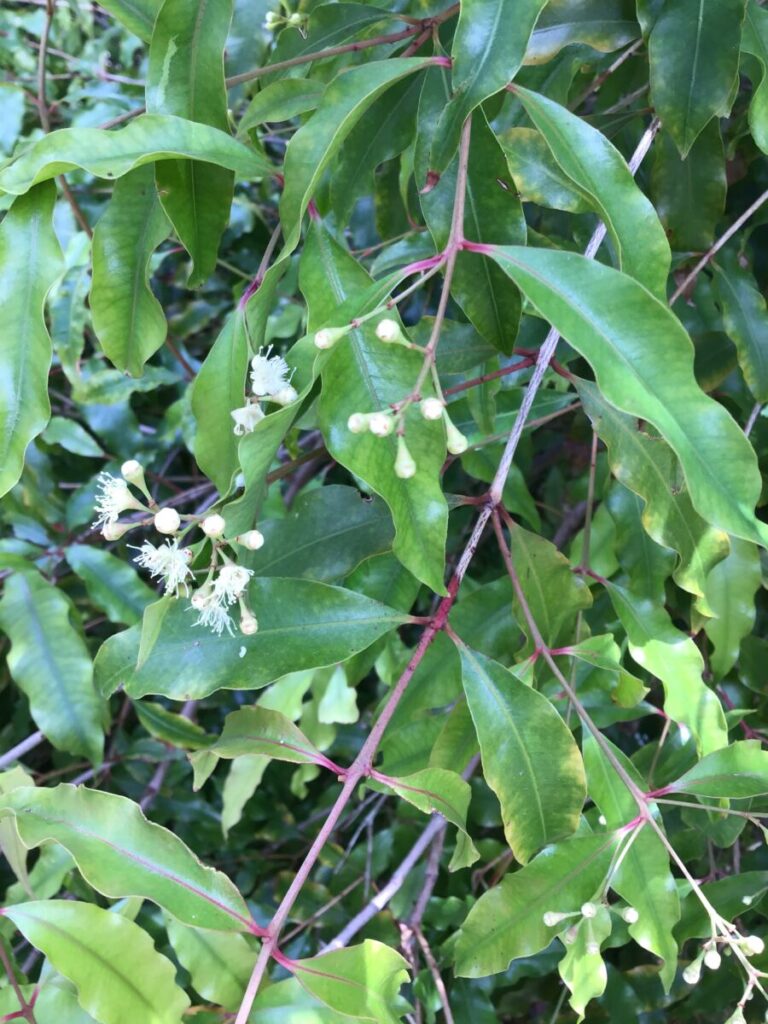Samantha Newton is an enthusiastic garden designer who has had a life of botany, landscape design, and researching ecological-sustainability issues.
Sam is affiliated with Macquarie University where she was responsible for creating a Bush-Tucker garden on campus. Macquarie University comprises an arboretum as part of its campus and the bush tucker garden was added as a teaching resource and example of how native plants can be used for culinary and medicinal purposes.
Sam was basically given free-range to convert an old unwanted car park in a very shady area (beneath a 4- storey building to the north), into a garden. With the help of some machinery, garden beds were made and a range of plants were installed in 2010. Sam profiled some of the species installed, including Syzygium paniculatum (Magenta Lilly Pilly), Alpinia caerulea (Native Ginger), Elaeocarpus reticulatus (Blueberry Ash), Castonospermum australe (Moreton Bay Chestnut) and Tetragonia tetragonoides (Warrigal Greens). These are must-haves in a bush tucker garden.
Other interesting species included Rubus rosifolius – a native raspberry found in rainforest margins in coastal NSW, as well as Melodorum leichhardtii (Zig Zag Vine) (now called Uvaria leichhardtii ) – a rainforest vine from the north coast of NSW
Leptospermum petersonii (Lemon-scented Teatree), Austromyrtus dulcis (Midyim Berry), Anetholea anisata (syn: Backhousia anisata ) and Macrozamia communis (Burrawang) were also planted. Other common plants included in bush tucker gardens are Citrus australasica (Finger Lime, now very expensive to buy!!), Podocarpus elatus (Plum Pine), Prostanthera ovalifolia (Oval-leaf Mint Bush) and don’t forget good-old Macadamia integrifolia (Macadamia). Sam has had a few challenges with the garden, especially the heavy shade aspect. The garden vritually receives no sunlight in winter. But, she and her team have persevered and the garden is now a very attractive feature of the university. You can watch Costa Georgiadis exploring the garden at this Facebook link: Hidden Gems Macquarie University’s Bush Tucker Garden Nothing like coming across secret gems of gardens when you least expect it. Come take a walk... | By Costa Georgiadis Official
Sam briefly showed her garden design work – where she installs mainly bush-tucker natives and encourages people to use these plants in place of exotics.
Sam has been involved with a very important initiative called “Gardening Responsibly – Plant Sure”
This is an initiative operated by a Consortium of Members from various horticultural, natural area- management and other stakeholder groups, to reduce the risk of horticultural plants becoming weeds in our natural landscapes. The idea is that certain species of plants will receive a certification by means of a label or “tick” under the scheme, that signifies that it is ecologically safe to plant and will not naturalise where they do not belong. We have to consider that non-local native plants, as well as exotics, can act as weeds in our local landscapes. Macquarie University is heading the research required for a massive list of commercial plant species, to determine if they can receive the certification under the Plant Sure Scheme. You can check a list of plants here at Check Your Choice – Gardening Responsibly.
Our members posed questions and comments about other native species and their potential as bush tucker. My personal opinion is that a lot of Australian native are ‘untapped’ and are likely hiding many secrets in terms of their culinary and medicinal potential.
We thank Sam for an enthusiastic and informative talk. This article has been republished via the Sutherland group June newsletter 2023.



